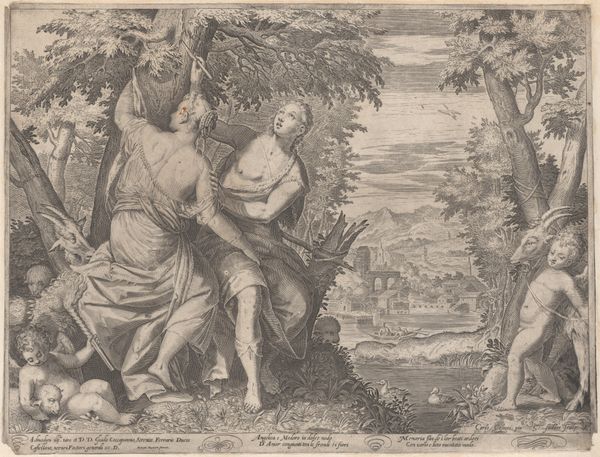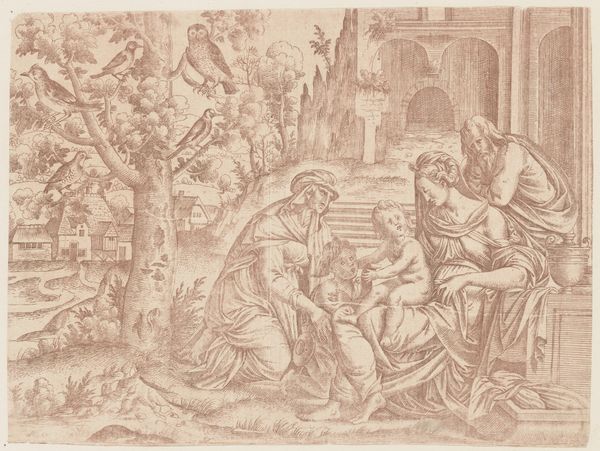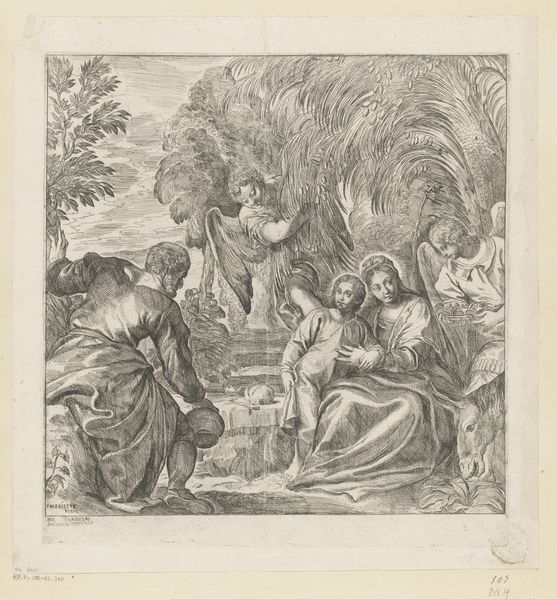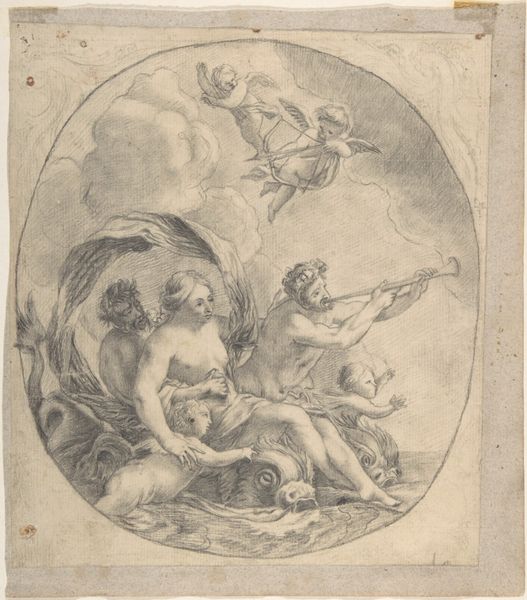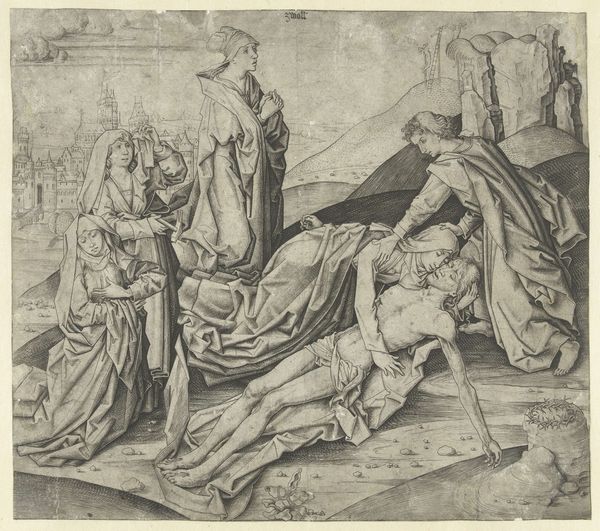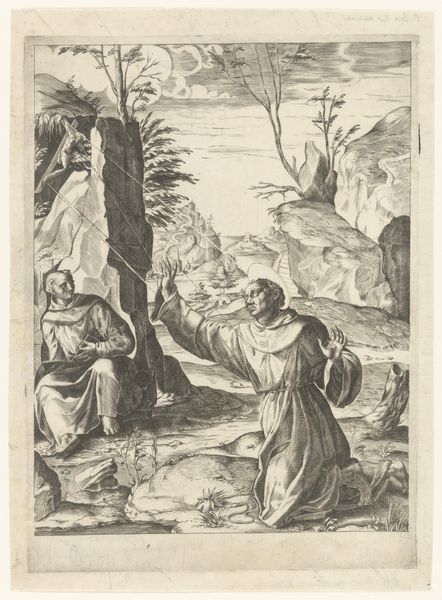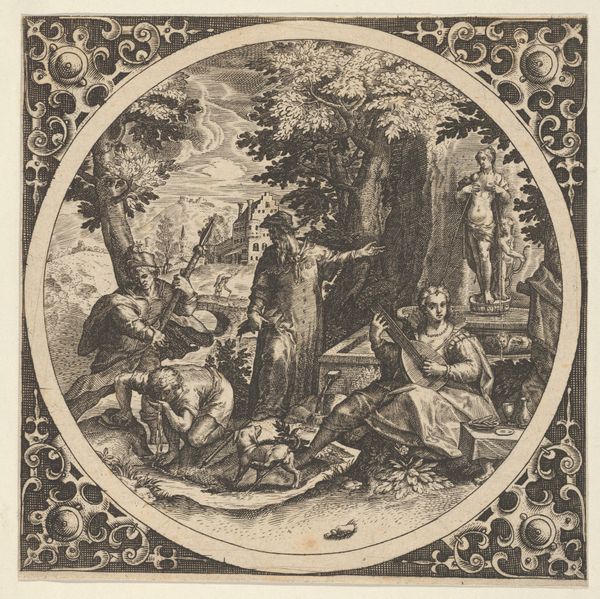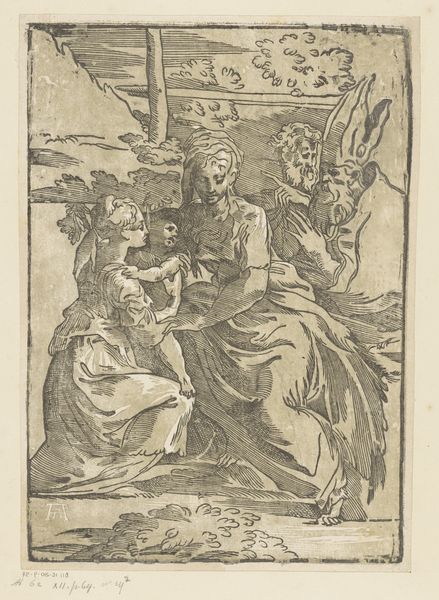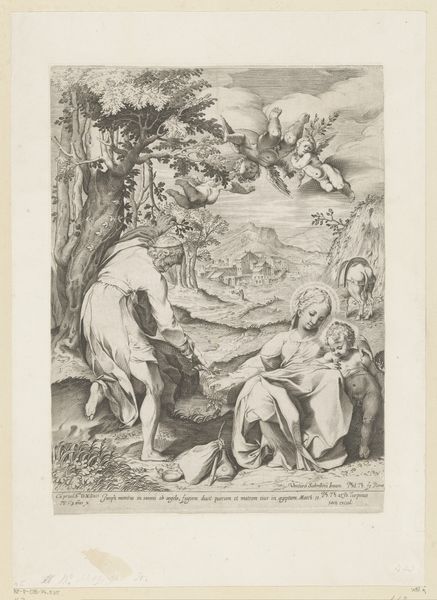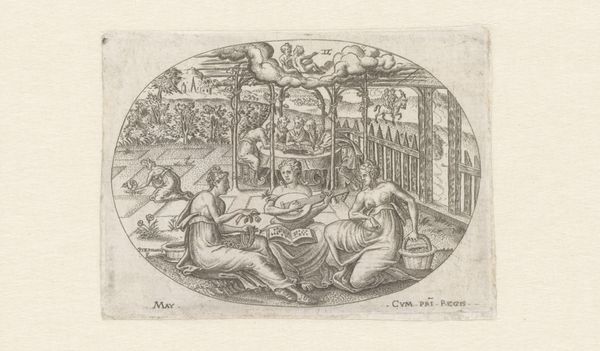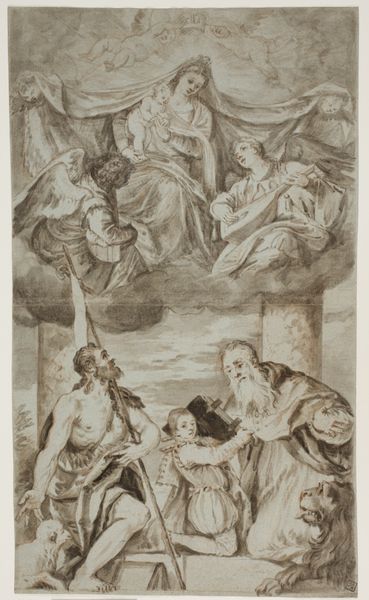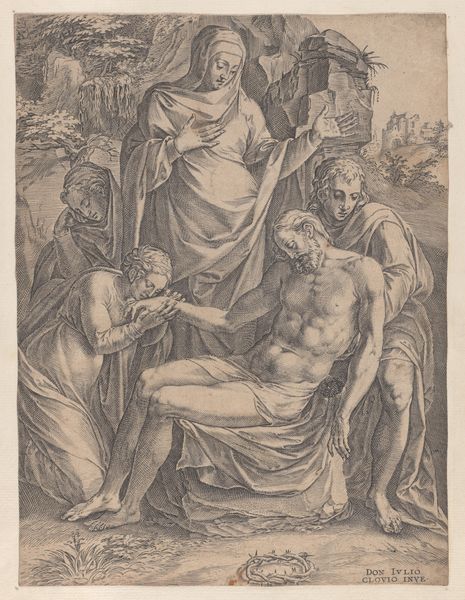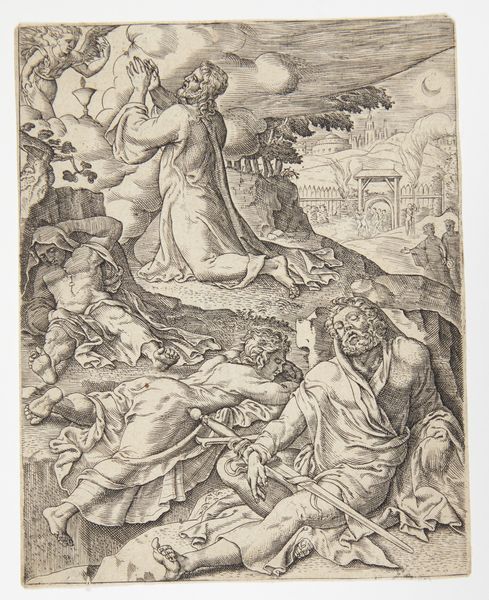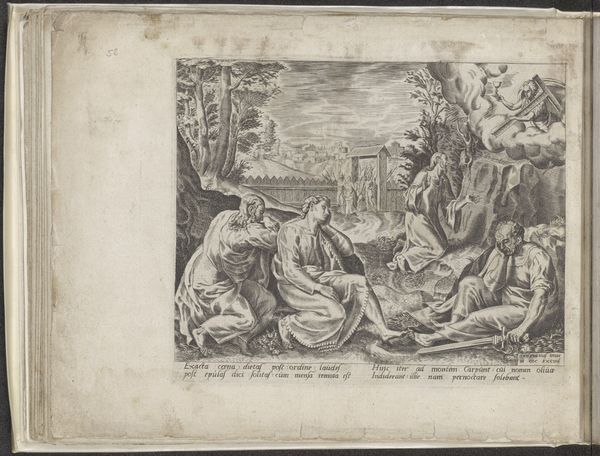
print, engraving
#
narrative-art
# print
#
mannerism
#
figuration
#
history-painting
#
engraving
Dimensions: height 235 mm, width 237 mm
Copyright: Rijks Museum: Open Domain
Editor: This engraving, "Christ on the Mount of Olives," made by Chrispijn van den Broeck in 1571, is striking, not only for its delicate line work, but also for the contrasting emotions portrayed. I’m intrigued by how it all comes together within a circular frame. What jumps out at you when you look at it? Curator: Immediately, the symbols speak volumes. Consider the chalice offered by the angel to Christ. It's a potent image, loaded with the weight of sacrifice, prefiguring his impending suffering and death. Do you notice how the disciples are rendered? Editor: Yes, they seem unaware and completely consumed by sleep. It's a strong visual contrast with Christ's focused prayer. Curator: Precisely. Their slumber isn't merely physical; it represents a deeper spiritual unawareness. It symbolizes humanity's struggle to stay awake to the divine. Look at the approaching figures at the gate, the details indicating their role, and consider them in relation to the sleeping disciples. Editor: The impending betrayal looms, a dramatic tension emphasized by their oblivious sleep. Are there other cultural symbols at play here? Curator: Indeed. The Mount of Olives itself holds significance. It's a place of prayer, but also of profound solitude and spiritual testing. This setting would be recognized by the intended audience and resonate with shared beliefs. Editor: This gives me so much to think about – I hadn't considered the sleeping disciples as anything more than background before, but seeing their cultural significance brings a new richness to the composition. Curator: Recognizing these symbols unlocks deeper layers of meaning and invites us to consider the universal themes of faith, sacrifice, and human fallibility that the piece embodies.
Comments
No comments
Be the first to comment and join the conversation on the ultimate creative platform.
